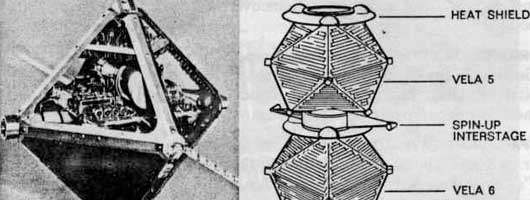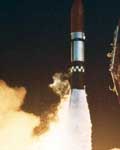ERS 17 & 18
Environmental Research Satellites 17 & 18

Environmental Research Satellites 17 & 18, part of the Octahedral Research Satellite Mark III series, were designed to provide a complete monitoring of radiation in space and to study the radiation background problems associated with the nuclear test detection devices on the Vela Satellite Program. ERS 17/18 were developed to measure ionizing radiation throughout the magnetosphere up to the altitudes of the Vela satellites.
 ERS 17 was launched into a highly elliptical orbit on July 20, 1965 along with the Vela 3A and 3B satellites. The initial apogee altitude was 112,200 km and perigee altitude was 192 km, which resulted in a orbital period of 43 hours. The orbital plane was inclined about 58o southward from the ecliptic plane and about 80o from the earth-sun line. The initial satellite spin rate was 6 RPM and inclined about 30o from the earth-sun line. ERS 17 returned data for about 3.5 months when a premature termination of the one-year end of life timer on November 3, 1965.
ERS 17 was launched into a highly elliptical orbit on July 20, 1965 along with the Vela 3A and 3B satellites. The initial apogee altitude was 112,200 km and perigee altitude was 192 km, which resulted in a orbital period of 43 hours. The orbital plane was inclined about 58o southward from the ecliptic plane and about 80o from the earth-sun line. The initial satellite spin rate was 6 RPM and inclined about 30o from the earth-sun line. ERS 17 returned data for about 3.5 months when a premature termination of the one-year end of life timer on November 3, 1965.
ERS 18 was launched on 28 April 1967 along with the Vela 4A and 4B satellites. The orbit had a 111,200 km apogee and 8,600 km perigee. Data were received until June 2, 1968.
ERS 17 & 18 Information
Mission Objectives
Spacecraft
Gamma-ray Counters
Scientific Results
Publications